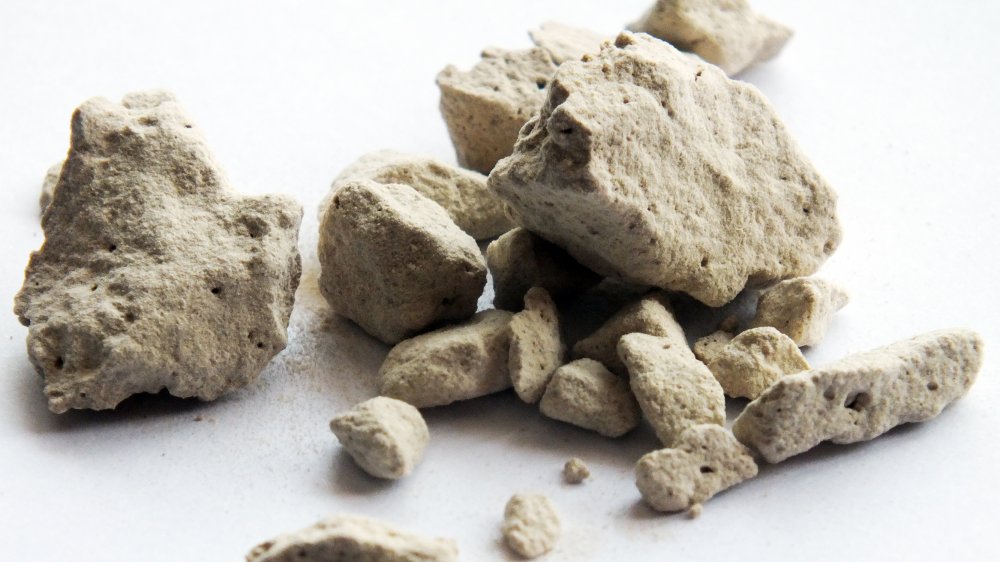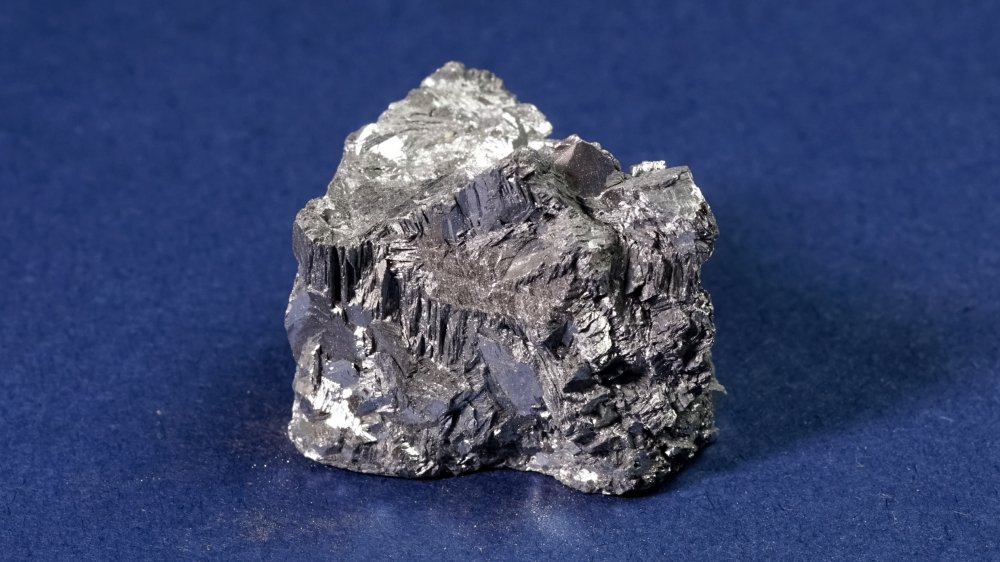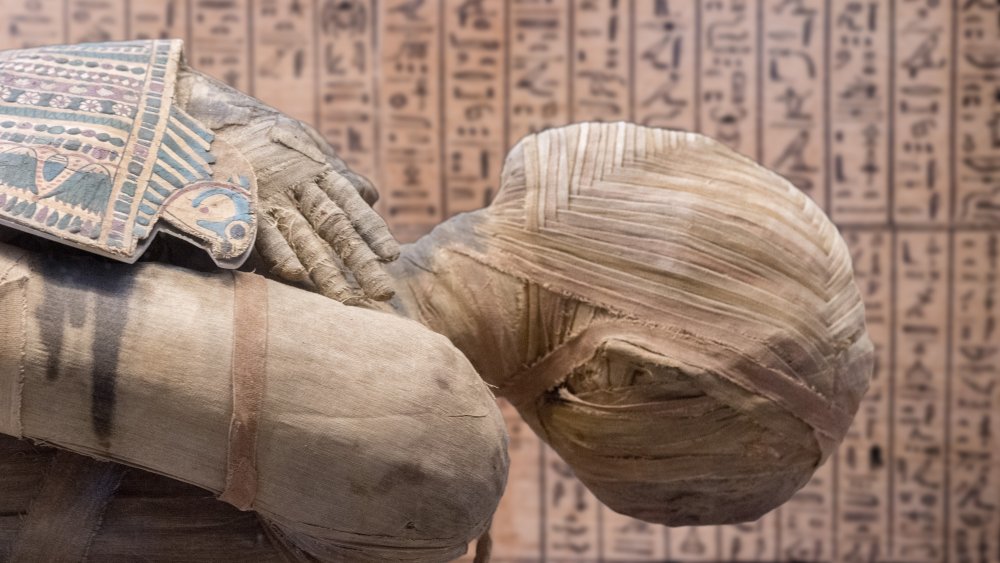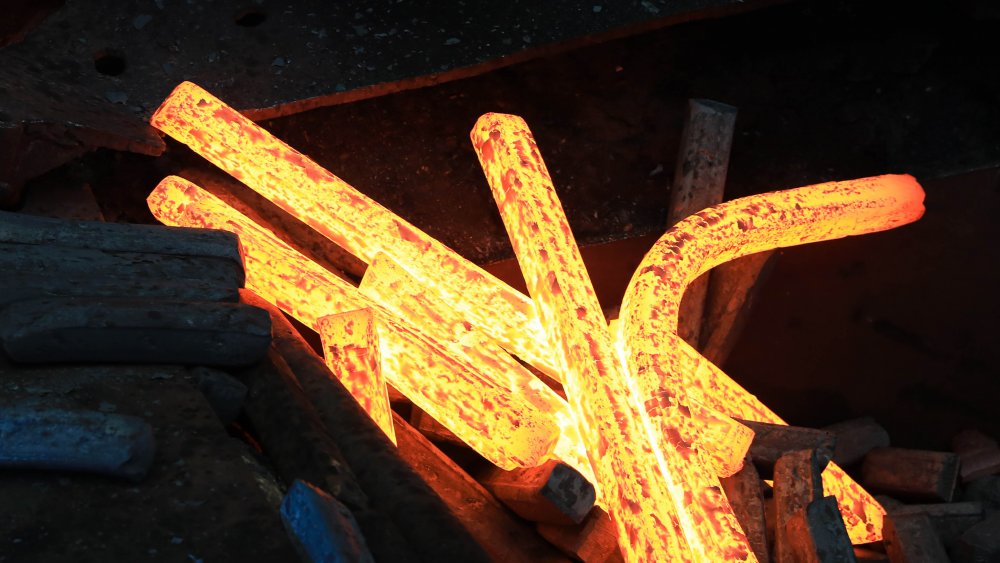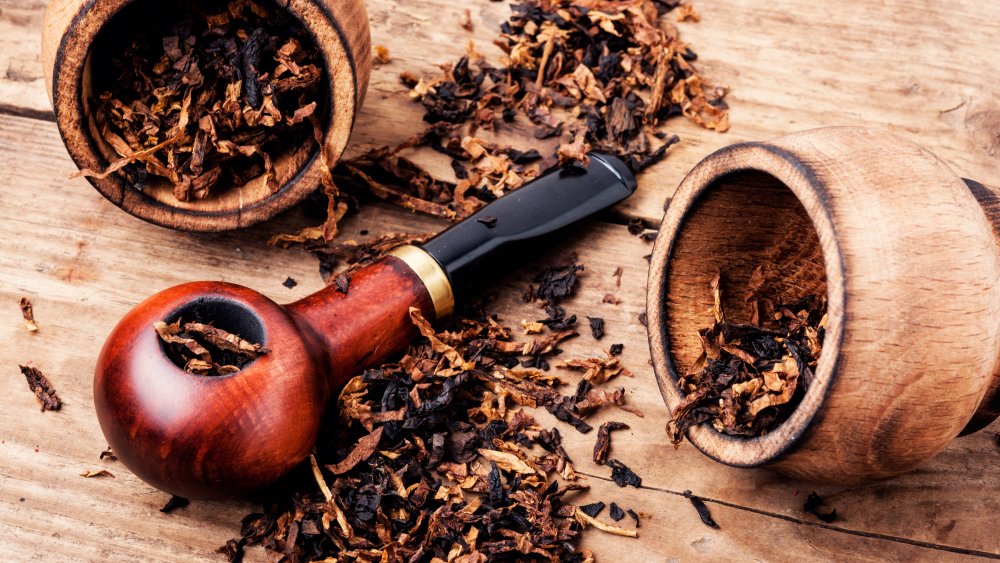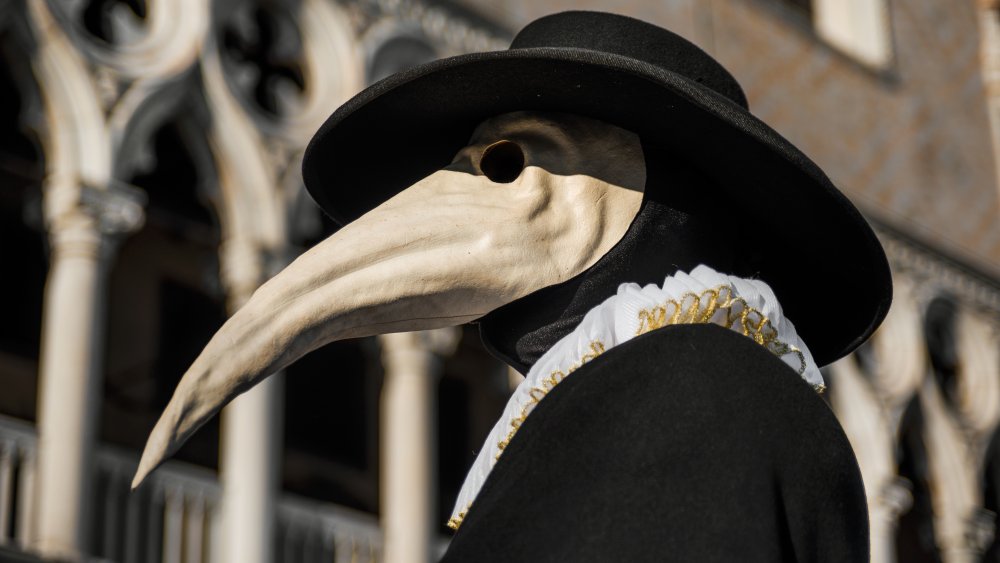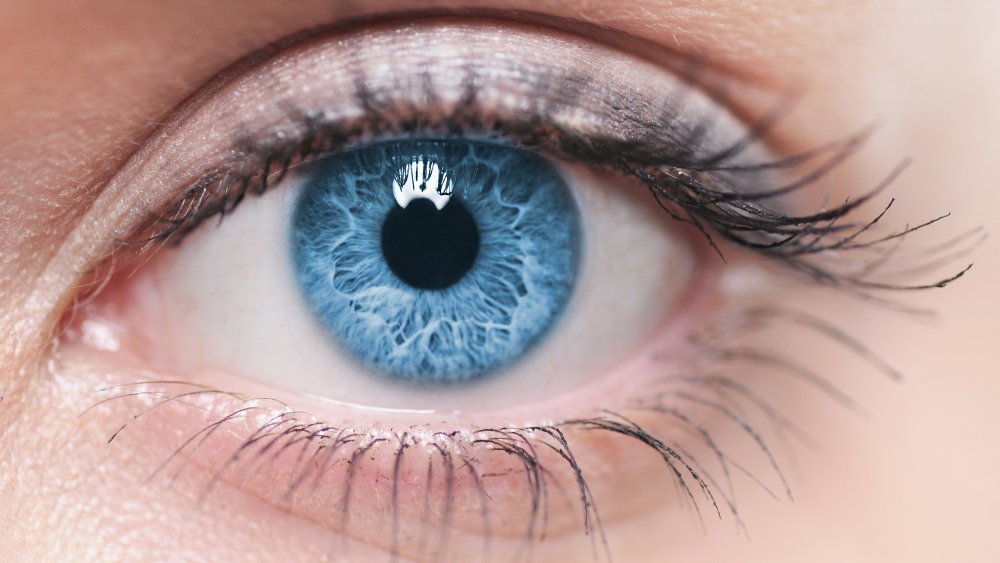The Grossest Medical Treatments In History
Medicine has made leaps and bounds over the last two centuries, thanks to things like germ theory, penicillin, and reliable anesthesia. Humanity has now all but eliminated many diseases that wiped out large chunks of the population for hundreds or even thousands of years. But it took a lot of work to get here, and throughout history, there are a ton of medical treatments that ranged from counterproductive to outright dangerous.
And then there are the ones that are so disgusting, they're unthinkable today. This isn't famous stuff like bloodletting with leeches or trepanning, where you drill a hole in someone's head to treat a number of things. This is the really disgusting stuff you didn't hear about in history class. They would definitely get your medical license taken away now, or get you outright thrown in prison in some cases. They don't teach this stuff in medical school anymore!
Album graecum and stercus equi were crappy medicine
Hacking up a lung? Nowadays, you might take something like cough syrup, but in the 1700s, there were some natural treatments you could try. The Pharmacopoeia Officinalis & Extemporanea, a 1722 volume of then-current medical knowledge by John Quincy, describes album graecum, also known as stercus canis officinale, and stercus equi, both of which were used to treat throat and respiratory illnesses.
So what are those mysterious Latin words? This is where it gets gross. Album graecum was dog poo, but not just any dog poo. It was poo that had dried until it was white, was crumbled up and mixed with honey, and then taken orally. Yes, actual doggy business you would eat. It was primarily for treating inflammation of the throat, and amusingly enough, Quincy also remarks it doesn't really work that well. So, basically, it turns out 1700s doctors were making people eat dog feces for no particular reason.
Then there's stercus equi. Similar to album graecum, this was dried, hardened horse dung. It, too, was mixed with something else. Quincy recommends pennyroyal water or white wine. Fancy! Unlike the doggy doo, though, the horse apples apparently actually helped, according to Quincy. It could reportedly treat asthma and other breathing difficulties quite handily. It's probably best to stick with your inhaler, though.
Some cure-all medicines were made from gross animal byproducts
While people now look at them skeptically, cure-alls were a big deal throughout history. A lot of time went into discovering medicines that could fix any problem before humans found out that's not actually possible. While many alleged cure-alls make some kind of logical sense, a whole lot were clearly just people throwing stuff at the wall to see what sticks.
Historical doctors would find a random substance, then get someone to take it. That included any animal byproducts they could get their hands on. A good example was ambergris, a rare, waxy material that is, essentially, whale vomit. In Pantologia, a 19th-century encyclopedia, ambergris is mentioned as a medicine to treat stomach problems, spasms, and could work as a "cordial," which is an old-fashioned term for a cure-all. The downside was ambergris smells awful, so it had to be heavily masked in a drink or food to administer it without making the patient nauseous. It's actually still used today, but in cosmetics, not medicine.
Another fun one was snail slime, which was believed to treat tuberculosis and straighten deformed limbs, among a wide variety of other conditions, according to The Encyclopedia of Folk Medicine. It wasn't always just the slime — sometimes doctors would remove a snail from its shell and mash it up or have the patient swallow the animal whole.
Antimony pills were medical fun for the whole family
In the olden days, what doctors knew about the digestive system was basically a series of wild guesses. When it came to stomach issues, it was really hard to tell what was going on and even harder to treat it. But, as detailed by the Royal Society of Medicine, our ancestors had a magic pill that could help!
Okay, it wasn't magic, and it wasn't quite a pill, either. It was a lump of antimony, a somewhat rare metal and number 51 on the periodic table, that needed to be swallowed by the patient. It actually worked, to a degree, but only because antimony is very toxic to humans, as noted by the Centers for Disease Control. It basically cleared out the digestive tract by poisoning everything as it went down.
Even that wasn't the gross part, though. The gross part is what happens afterward. Naturally, the antimony was eventually expelled by uh, natural means. It was then cleaned for reuse. Yes, seriously. As previously mentioned, antimony is somewhat rare, and it was pretty expensive at the time. As noted in The Medical Critic and Guide, a single antimony pill could last a lifetime. Not only that, but they were frequently passed down as heirlooms, meaning you were swallowing something that had been in grandpa's rectum just a few years beforehand. Yum!
Corpse medicine is exactly what you think it is
One thing historical doctors loved is what's now called "corpse medicine." No, it's not cough syrup for your Halloween skeletons. It is, in fact, medicine made from corpses. And "medicine" may be a stretch, because like many old-fashioned treatments, the efficacy of these was mixed, at best. One particularly popular one across several centuries was called, among many other names, armsünderfett, which is German for "poor sinner's fat." That's not a clever euphemism. It was literally human fat harvested from dead criminals, according to Defiled Trades and Social Outcasts. In fact, human remains were very valuable, so executioners in the Middle Ages would often gather fat, organs, hair, and various other parts of the body to sell to anyone who wanted them. It was completely normal at the time. Poor sinner's fat could be melted down into a salve, which was supposed to help with joint and bone problems.
Then there was a cure-all called mummia. While it initially referred to the kind of bitumen used in mummification, over time the name got confused to the point where people assumed that mummia was made of the mummies themselves, and soon the bitumen was replaced by containers of powdered mummies, mostly from Egypt. Eventually, this caused a shortage of mummies (a big reason why they're fairly rare now) so people mummified fresh corpses and then ground those up instead, according to Egyptology: The Missing Millennium.
Horrifying medical treatments for hemorrhoids were common
Nowadays, hemorrhoids are usually treated with creams, but in centuries past, the treatment was far more terrifying. Historical surgeons would heat up iron rods until they were red-hot, then apply them directly to a patient's butt in order to cauterize the hemorrhoids. If that sounds more painful than just dealing with the hemorrhoid, that's because it was. Surgical removal of hemorrhoids is a thing today in some rare cases, but it's done with actual surgical instruments. Also keep in mind that anesthesia wasn't a thing yet back then. Hippocrates, the guy the Hippocratic Oath is named after, even wrote about this revolting practice, as recorded in Strange Medicine.
This wasn't the only disturbing way to treat hemorrhoids, though. There was also a tool known as an écraseur, which was a handle connected to a loop of chain. This loop was wrapped around a hemorrhoid (or anything else that protruded from the body), then the chain was tightened, link-by-link, until the circulation was cut off to the protuberance your doctor wanted to remove. It would then eventually be tightened even more until it was pinched off (êcraseur is French and means "to crush", according to Worn Over Time) or could be cut off. Again, no anesthesia, though at least the device kept external bleeding to a minimum. Another popular use for an écreaseur? Removing an animal's testicles.
Ancient Romans whitened their teeth with human pee
Today, there are numerous teeth whitening products available, from special toothpastes to strips or trays. Teeth whitening will be a $4.7 billion industry by 2024, according to Dentistry Today. In Ancient Rome, teeth whitening was also popular, but they didn't have the plethora of options modern people do, so they used something gross instead — their own pee, according to Smithsonian Magazine.
This method was so popular that Roman poet Catullus wrote a verse about it, called "On Egnatius of the White Teeth." It talks about a man named Egnatius who smiles all the time, even at funerals, because his teeth are so white, but they only got that way because he used pee to whiten them. It's basically an ancient diss track, as Catullus is making fun of Egnatius, but it does show that this was a well-known practice.
The way it worked was one would pee into a container of some kind, then wait until the urine broke down. Then it was rubbed on the teeth and gums. The thing is, it actually kind of worked. Aged urine is basically pure ammonia, according to io9, which does indeed whiten teeth. So, while it's very disgusting, it did do what it was intended for, which is not bad compared to some of the treatments on this list.
Smoke enemas for those cold evenings
In the 17th and 18th centuries, tobacco had just begun being imported to England from America, and this led to one of the strangest medical treatments in history. Initially, it was limited to drowning or hypothermia victims. Medical practitioners wanted to warm patients quickly and promote respiration, but instead of using blankets or a heat source, they decided the best solution was to literally blow smoke up people's butts.
When this appeared moderately successful (likely due to the patient having time to warm up naturally and not the smoke), tobacco smoke enemas quickly became all the rage, and they began to be used for treatment of all kinds of maladies, like colds or even typhoid, according to the British Columbia Medical Journal. The enemas were administered by doctors hooking a tube up to you-know-where and blowing warm tobacco smoke into the other end of said tube. It wasn't exactly a complicated system, and the doctor doing it usually didn't worry about being sanitary, since humans hadn't discovered germs and bacteria. It was just a tube and regular old tobacco smoke. Later systems did include a bellows instead.
You laugh now at pictures of doctors smoking while doing their jobs, but tobacco smoke enemas took things to the next level. The treatments could reportedly take quite a while, and were eventually found to be completely ineffective, so the fad died down by the early 19th century.
Ancient Egyptians had very shady toothpaste
Dental hygiene was decidedly not a thing for thousands of years of human existence, so a lot of folks didn't pay too much mind to their teeth until they started causing them pain. Then, they'd get serious and have the tooth extracted, though as a stopgap they might try a variety of pain relief methods. Some were fairly ordinary, like heat or cold applied to the jaw near the tooth, and some cultures even developed painkillers like opiods to temporarily stop the pain.
But Ancient Egypt had to go and make things weird. They developed a sort of toothpaste that one could use to treat tooth pain, but it wasn't made out of the stuff people use today. Instead, their toothpaste was created from of a variety of ingredients, with one of the more consistent additions being mice, meaning that a live mouse was smashed up into a paste, which was then placed on the tooth causing the pain.
If you thought fluoride treatments at the dentist were bad, this is far more disgusting. Sometimes, the mouse wasn't even mashed up, but instead cut in half, and the still-warm body of the mouse was placed directly on the affected tooth, according to The Beginnings of Dental Caries and its Treatments. Its efficacy is unknown, but considering dead mice have no known pain relieving properties, it's a pretty safe guess that the mousepaste probably did nothing at all.
John Brinkley made a horrifying virility treatment
Historically, men have had a serious interest in machismo and masculinity, and throughout the ages, medical "professionals" have cooked up numerous remedies to improve male fertility and/or virility. Before little blue pills were a thing, there were all kinds of specious treatments to turn back the clock on manhood, but none were as distasteful as those proffered by a 20th century huckster named John Brinkley.
Brinkley posed as a trained doctor, but was nothing of the sort. He was a quack who managed to dupe thousands of people into throwing their money away on a ghastly treatment that did nothing, according to Charlatan. Brinkley's procedure involved slicing open the scrotum and implanting two goat testicles alongside the man's existing equipment. The idea was that these extra gonads would augment the man's reproductive system in various ways. Because goats were considered to be a symbol of male potency, this was just assumed to work. He didn't even connect them to anything, just placed them inside the scrotum and sewed it back up.
Naturally, they did nothing at best and caused infections and rejection symptoms at worst. Turns out, you can't just stick any old thing (especially organic tissue) in a human body and expect our immune systems to not freak out. Numerous people who underwent the xenotransplantation ended up having a lot of problems. Brinkley was eventually exposed as a con man and his empire of goat testicles quickly collapsed.
Curing the plague with farts
Before germs were discovered, there were numerous explanations for how airborne illnesses spread, but none were as popular as miasma theory. Miasma theory held illness was caused by toxic vapors that held decaying matter, according to Science Museum London. It wasn't an awful guess, and does share a resemblance to what people know now about airborne bacteria, but the treatment for miasma was pretty silly. To balance the bad vapors out, one needed to expose themselves to good vapors. Medical science in Middle Ages Europe was obsessed with balance, such as the four humors theory of the body, so this treatment fit right in. Sometimes, good vapors were simply nice-smelling things, like plague doctors who packed their birdlike masks with herbs or flowers. Other times, the smells needed to be from the body of a person not exposed to the miasma.
Thus, it came to pass that in the time of the black plague, one commonly recommended treatment was to inhale flatulence. Not just any flatulence, though — it had to come from a clean source. So, doctors recommended that healthy patients fart into jars and save them in case they did get sick, at which point they would open the jars and take a big whiff of stale poots, according to AOL News. In theory, this would cancel out the miasma and cure the plague. In reality, patients still died from the plague, but also suffered the indignity of farting into jars.
Ancient Egyptians had strange eye treatments
While eye drops today are somewhat unpleasant, between putting chemicals in your eyes and remembering the annoying Ben Stein Visine commercials, they're nothing compared to the eye treatments that doctors in Ancient Egypt whipped up. Ancient Egyptians, as you might recall from history class, were quite fond of animals, and so their medical treatments typically revolved around animals and their byproducts. One particularly gross treatment for an eye infection was drops of bat blood, which would supposedly cancel out the infection. Got pink eye? Get ready for red eye! It was believed that the bat's advanced night vision would somehow transfer on to the patient, according to Ancient History Encyclopedia, though obviously that's not how medicine works.
Even that was pretty tame when compared with how they treated cataracts, though. No animal bodily fluids were involved. Instead, pieces of glass were heated up, then dropped directly into the eye, according to Strange Medicine. It was allegedly kind of successful, in that the heat of the glass and its natural roughness may have burned or scratched away the cataract, but it couldn't have been particularly pleasant, and it did run the risk of blinding the patient completely. It's also not clear where this idea originated from, but it's easy to assume that it was invented by someone who was really desperate to remove some pesky cataracts and didn't care about the consequences.
Perineal lithotomies were extremely disturbing
Kidney, gall, or bladder stones stones suck today, but are very treatable. Doctors have a number of options, including using tools to get inside your body and pulverize them, for particularly nasty ones. But before the modern era, that wasn't possible, and bad, persistent stones weren't just painful, they could even be outright deadly, especially if they set up an infection. So, it was very important to remove troublesome stones before that happened. But how could doctors remove or destroy the stones without the modern medical technology humans have now?
The most terrifying way possible, of course! A lithotomy is a surgical procedure where a surgeon directly removes the stones from the body by cutting into the kidneys, gallbladder, or bladder and physically taking them out. That's still a thing today for extremely difficult stones, but it's meant to be a last resort, as non-invasive methods are often very successful. One of the now-retired forms of lithotomy, though, was particularly disgusting.
A perineal lithotomy involved cutting directly into the perineum — the flap of skin between the genitals and anus. Then, the surgeon would dig inside the affected area (perineal lithotomies were most often used for bladder stones, but could potentially remove other kinds of stones, too) and pull the stones right out, according to BJU International. If you just read this paragraph without making a face, congratulations, you have what it takes to have been an old-timey surgeon!


